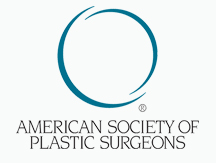Home / Procedures / Scar Revision


Scar Revision
While scars are a natural part of healing, they can sometimes be unsightly, painful or even constricting, depending on their location. Patients frequently request treatment of facial scars for cosmetic reasons. Scar revision is a cosmetic treatment that minimizes scars so that they become more like the surrounding skin and texture. While this procedure does not completely erase a scar, it can often improve discolorations, surface irregularity scars, hypertropic scars (thick clusters of scars at wound site), keloids (painful, itchy scars) or contractures (scars that restrict movement). It is most effective for physically healthy, non-smoking individuals who have a positive outlook, no active acne or other skin diseases and desire to have a scar’s appearance minimized.How Scar Revision Works
If a patient is deemed a good candidate for scar revision, he or she may be able to undergo treatment with only local anesthesia. Other, more significant cases will require heavier sedation. Depending on what Dr. Potyondy recommends, the various scar revision treatment options include the following:- Topical Treatment: From gels and tapes to external compression, topical treatments are designed to close up wounds and keep the skin from creating irregular pigments.
- Injections: To fill concave scars, injections like steroidal-based compounds can be used to reduce collagen formation and change the look of scar tissue. Results vary, but therapy usually must be repeated.
- Surface Treatments: Some of the most popular cosmetic treatments for scars are surface treatments that remove top layers of skin and/or change tissues, such as dermabrasion, laser resurfacing, chemical peels or skin bleaching techniques.
- Surgery: For particularly deep scars, Dr. Potyondy may need to make an incision(s) to reposition a scar, implement skin grafts or do what’s called a tissue expansion, where an expander is placed under the skin and filled with sterile solution to enlarge the area of healthy skin. Later, the expander and the scar are removed. This process can require several different procedures.
Results
Post-surgery, patients often have bandages or dressings at the scar site, about which Dr. Potyondy will give instructions for caring and preventing infection. Results will last a long time, but they may not fully show themselves for up to a year, as the scar heals and fades. In some cases, additional surgery may be necessary.








